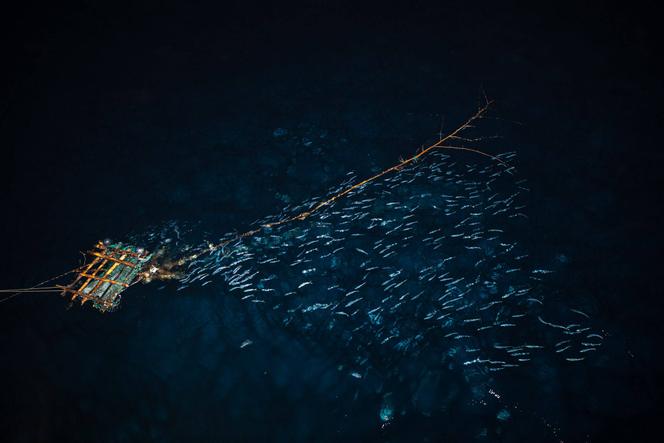


Although unfamiliar to consumers, fish aggregating devices (FADs) are a recurring topic of debate amongst tuna fishing professionals. They will once again be a major topic of discussion at the 28th assembly of the Indian Ocean Tuna Commission (IOTC), held this year in Bangkok, Thailand, from May 13 to 17. This intergovernmental organization, which aims to manage the exploitation of these large migratory fish, has 29 members. Among these members are the European Union (EU) and France, which has a seat on the IOTC thanks to the island of La Réunion and the activity of its tuna fishing vessels in this region.
In the run-up to the Bangkok meeting, lobbying is at its height, pitting opponents against defenders of FADs, which are now drifting in large numbers in the ocean. In its report published on Monday, May 6, the BLOOM Association dedicated a significant portion to comparing the impact of FADs with pole-and-line fishing for tropical tuna, as practiced by fishermen in the Maldives.
What does an FAD look like? It's pretty simple. It usually takes the form of a small, cobbled-together-looking raft made up of bits of wood, plastic, bamboo and metal tubing, often weighted down with old nets, tarpaulins and ropes dozens of meters long. The key feature of the device is the electronic equipment it's fitted with: it includes a GPS beacon and a depth sounder, possibly equipped with a solar panel. This setup enables sailors to locate the device, assess the quantity of fish naturally massing under this floating structure and then strategically deploy their net – a purse seine – to efficiently snatch a substantial amount of fish when the time is right.
"Without FADs, purse seine vessels (...) would spend more time at sea looking for large schools of tuna, with longer fuel-intensive operations and uncertain results," argued the European Commission, echoing the arguments of French and Spanish fishing companies. "Using FADs has clear benefits in lowering the emission of greenhouse gases and the cost of fishing operations." This assertion is not based on any real environmental and social assessment.
For its analysis, the NGO BLOOM Association examined, among other sources, data from the IOTC and its Scientific Committee. The organization reports that large French and Spanish tuna vessels launch an average of 15,000 FADs annually in the Indian Ocean. Yet they lose many of them. For example, the oceanic tuna company Compagnie Française du Thon Océanique has declared that, of the nearly 2,750 FADs deployed by its vessels in 2021, only 34 were recovered at sea.
You have 46.03% of this article left to read. The rest is for subscribers only.
